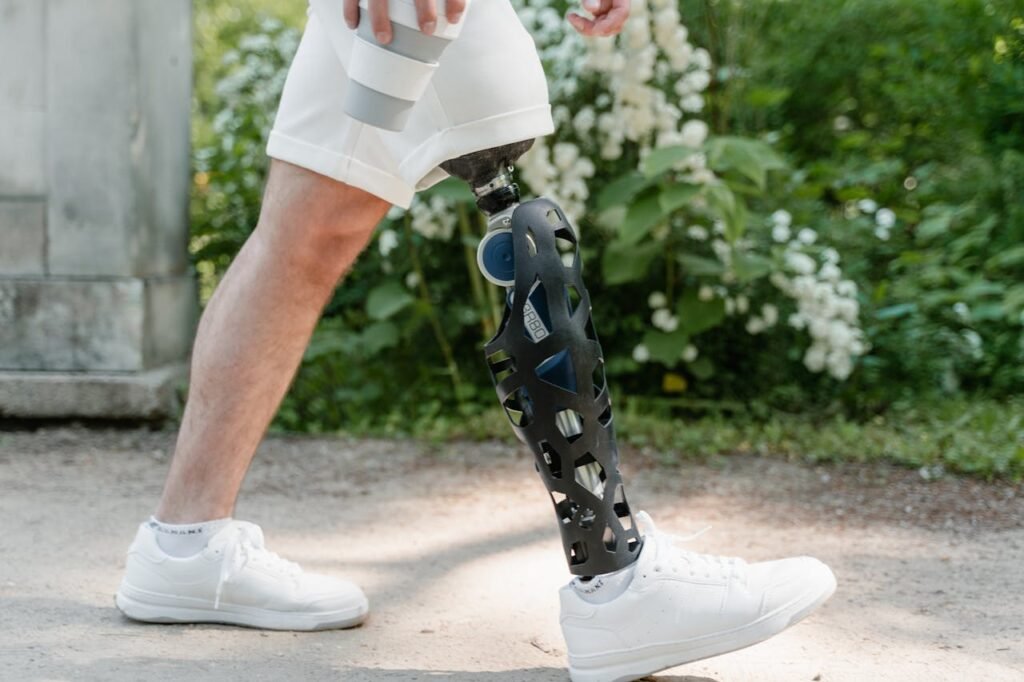Prosthetic technology has come a long way from being static, mechanical replacements to intelligent, real-time adaptive devices that respond to a user’s unique movement, environment, and daily activities. Smart prosthetics are changing the way people interact with their artificial limbs, making them more comfortable, intuitive, and responsive than ever before.
With the integration of AI, machine learning, real-time sensors, and cloud connectivity, smart prosthetics are now able to learn from user behavior and make instant adjustments to ensure a seamless experience. This means better comfort, improved mobility, and greater independence for prosthetic users worldwide.
At Robobionics, we are at the forefront of smart prosthetic innovation, ensuring that our users benefit from the latest advancements in AI-driven prosthetic technology. In this article, we explore how smart prosthetics are adapting to user needs in real-time, transforming mobility and quality of life.
1. AI-Powered Adaptation: Learning from User Movements

Artificial Intelligence (AI) is playing a crucial role in making prosthetics more intelligent by helping them analyze and learn from user movements.
Smart prosthetic limbs are equipped with machine learning algorithms that continuously track movement patterns. Over time, these prosthetics can predict user intent, adjusting their behavior to match the way a person naturally moves. For example, an AI-powered prosthetic leg can detect whether a user is walking, running, or climbing stairs and automatically adjust ankle stiffness, foot position, and step length for better stability and balance.
By 2030, AI-driven prosthetics will be able to self-optimize, meaning they will no longer need frequent manual adjustments. Instead, they will continuously improve their responsiveness, making movements feel as natural as possible for users.
2. Real-Time Sensors: Instant Feedback for Smoother Motion
One of the biggest innovations in smart prosthetics is the use of real-time sensors that provide instant feedback to the limb, ensuring smoother and more efficient movement.
These sensors can measure pressure, force, temperature, and acceleration, allowing the prosthetic limb to react instantly to changes in movement and environment. For example, a smart prosthetic hand can detect the weight and texture of an object and automatically adjust grip strength to prevent slipping or crushing. Similarly, a leg prosthetic can sense uneven terrain and modify its movement to prevent tripping or instability.
By 2030, real-time sensor technology will make smart prosthetics feel more like natural limbs, allowing users to walk, grip, and interact with the world around them with greater confidence and precision.
3. Haptic Feedback: Restoring the Sense of Touch
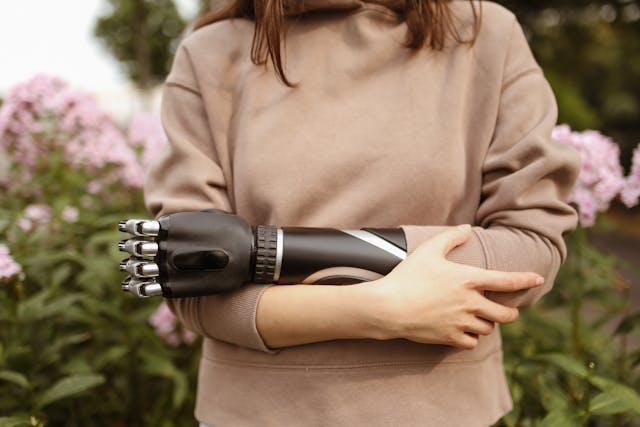
One of the most exciting advancements in smart prosthetics is haptic feedback technology, which aims to restore the sensation of touch for prosthetic users.
Smart prosthetics now include tiny pressure sensors and electrical stimulation systems that send signals to the nervous system, allowing users to feel textures, pressure, and even temperature through their artificial limbs. This means that a user wearing a bionic hand can tell the difference between holding a soft sponge and a hard object.
By 2030, haptic feedback systems will be fully integrated into most smart prosthetics, allowing users to experience a more natural and immersive interaction with their environment, improving both daily activities and emotional connection to their prosthetic limbs.
4. Cloud-Connected Prosthetics: Remote Updates and Instant Adjustments
Cloud technology is making prosthetics smarter and more adaptive, allowing for remote updates, instant adjustments, and AI-driven optimizations.
With cloud-connected prosthetics, users can receive software upgrades automatically, ensuring that their limb is always running on the latest AI learning models. Prosthetic specialists can also analyze real-time performance data and make remote fine-tuned adjustments based on a user’s movement history. This means fewer clinic visits and better long-term comfort.
By 2030, cloud-based prosthetic systems will allow users to personalize their prosthetic settings through smartphone apps and voice commands, making prosthetic control more accessible and user-friendly than ever before.
5. Brain-Machine Interfaces: Controlling Prosthetics with Thought
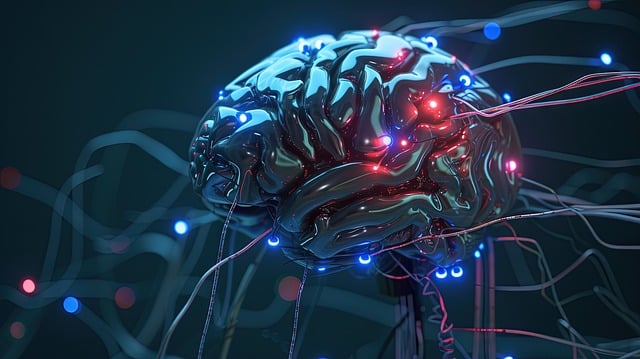
The future of prosthetics is moving toward brain-machine interfaces (BMIs), allowing users to control their prosthetic limbs using only their thoughts.
BMIs work by detecting electrical signals from the brain and translating them into commands that directly control the prosthetic limb. This means that instead of manually adjusting settings, a user could simply think about moving their hand or leg, and the prosthetic would respond in real time.
By 2030, brain-controlled prosthetics will be widely available, allowing for seamless, natural movement, making artificial limbs feel like an extension of the body rather than an external device.
6. Energy Efficiency: Smart Prosthetics That Conserve Battery Life
One of the biggest challenges with high-tech prosthetics is battery life. Smart prosthetics are now integrating AI-powered energy management systems that help conserve power and extend battery life.
These systems adjust energy use based on activity level. For example, if a user is standing still, the prosthetic will enter a low-power mode, but if the user starts walking or running, the device will automatically optimize power use to match demand.
By 2030, energy-efficient AI-driven prosthetics will reduce the need for frequent recharging, ensuring that users can rely on their prosthetic devices for extended periods without interruption.
7. Smart Materials: Prosthetics That Change Shape for Better Comfort
New materials are being developed that allow smart prosthetics to adjust their shape, flexibility, and stiffness based on user needs.
Using shape-memory alloys and soft robotics, prosthetic limbs can automatically adjust their fit to accommodate swelling, weight changes, or activity levels. This ensures long-term comfort without the need for manual refitting.
By 2030, self-adjusting prosthetic materials will eliminate pressure sores, discomfort, and poor prosthetic fit, making artificial limbs more personalized and adaptable.
8. The Future of Fully Autonomous Smart Prosthetics
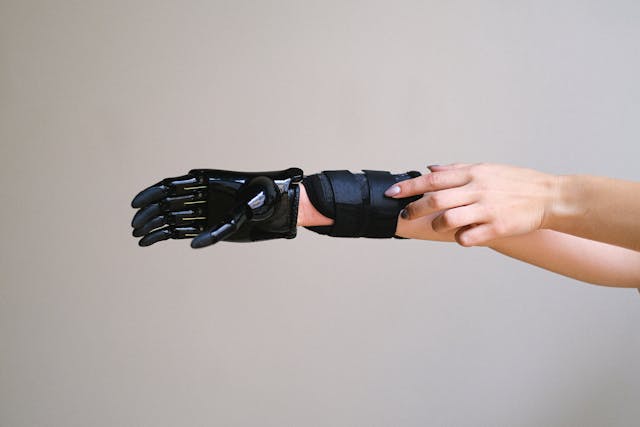
With AI, real-time sensors, haptic feedback, and cloud connectivity, the ultimate goal is to create fully autonomous smart prosthetics that function just like natural limbs.
Future prosthetic limbs will not only respond instantly to movement but also predict user needs before adjustments are even required. These limbs will be able to adapt to different terrains, self-heal minor damages, and optimize grip strength and flexibility in real-time.
By 2030, smart prosthetics will be so advanced that users will no longer feel like they are wearing artificial limbs—instead, these devices will feel like a true extension of their own body.
9. AI-Powered Rehabilitation: Helping Users Adapt Faster to Smart Prosthetics
One of the biggest challenges for prosthetic users is learning how to use their new limb effectively. Traditional rehabilitation can take weeks or months, requiring multiple visits to specialists. However, AI-powered rehabilitation programs are making this process faster and more efficient.
Smart prosthetics now come with built-in AI coaching systems that provide real-time movement analysis and instant feedback. These systems track how the user walks, grips objects, or balances, offering personalized training exercises to improve coordination and comfort. Some models even integrate virtual reality (VR) simulations, allowing users to practice movements in a safe, controlled environment.
By 2030, AI-driven rehabilitation tools will make prosthetic adaptation easier, ensuring that users gain full control and confidence in their smart prosthetics much faster than ever before.
10. Voice-Controlled Prosthetics: Hands-Free Adjustments for Maximum Convenience
Smart prosthetics are becoming more interactive, allowing users to control them hands-free using voice commands.
With built-in AI voice recognition, users can simply say commands like “adjust grip strength” or “increase walking speed,” and the prosthetic will respond instantly. This is especially helpful for people with limited mobility in both upper and lower limbs, as it eliminates the need for manual adjustments.
By 2030, voice-activated prosthetics will be common, providing a seamless, intuitive way for users to personalize their prosthetic experience on the go.
11. Smart Prosthetics for Sports: Boosting Athletic Performance
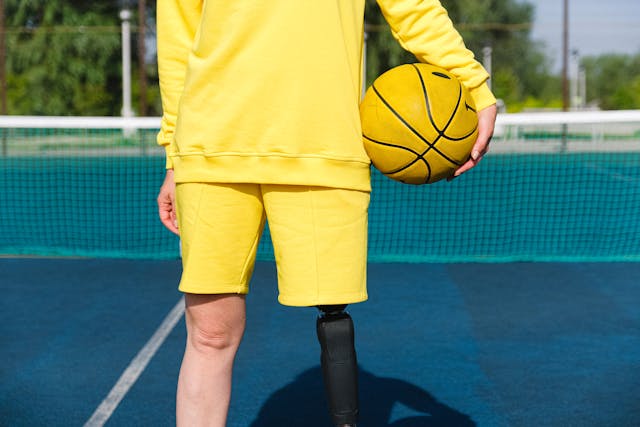
Athletes using prosthetics have always faced unique challenges, but smart prosthetic technology is eliminating those limitations.
Advanced AI-driven sports prosthetics are now designed to analyze real-time motion, optimize energy return, and adjust to different terrains automatically. A smart running blade, for example, can detect the type of ground surface and adapt its flexibility for maximum efficiency, reducing strain on the user’s body.
By 2030, athletic prosthetics will be highly customized, allowing users to run faster, jump higher, and compete at a professional level with ease, making adaptive sports more inclusive and accessible.
12. Smart Prosthetics for Children: Growing with the User
Children who require prosthetics often need frequent replacements as they grow, leading to high costs and frequent fittings. Smart prosthetics are solving this problem by adapting to a child’s changing body.
New AI-powered pediatric prosthetics come with modular designs that adjust limb length and flexibility over time. These prosthetics track growth patterns and alert caregivers when minor modifications are needed, reducing the need for entirely new limbs every few years.
By 2030, smart prosthetics will automatically adjust to accommodate a growing child, ensuring that kids never have to feel restricted or outgrow their artificial limbs.
13. Predictive Maintenance: Preventing Breakdowns Before They Happen
One of the biggest concerns for prosthetic users is unexpected breakdowns or malfunctions. Smart prosthetics now come with predictive maintenance features, helping users detect and fix issues before they cause problems.
These AI-powered systems analyze wear and tear, sending alerts when a part needs adjustment, replacement, or lubrication. Some models even include self-healing materials that repair minor cracks or structural weaknesses on their own.
By 2030, predictive maintenance will ensure that prosthetic failures are rare, giving users long-lasting reliability and peace of mind.
14. Smart Prosthetics in the Workplace: Enhancing Productivity

People with prosthetics often face challenges in physically demanding jobs, but smart prosthetics are making workplaces more accessible.
AI-powered prosthetics can detect workload levels and adjust accordingly. For example, a smart robotic arm can increase grip strength when lifting heavy objects, then relax for fine motor tasks like typing or assembling products.
By 2030, smart prosthetics will be widely used in industries like construction, manufacturing, and even office jobs, ensuring that people with prosthetic limbs can perform their tasks comfortably and efficiently.
15. Smart Prosthetics and Mental Health: Reducing the Emotional Strain
Beyond the physical advantages, smart prosthetics are also helping with mental and emotional well-being. Many prosthetic users experience frustration, social anxiety, or stress when adjusting to an artificial limb, but AI-powered prosthetics are helping reduce these challenges.
Smart prosthetics with haptic feedback and adaptive AI make movements feel more natural, increasing user confidence. Some advanced models even include built-in mindfulness coaching and relaxation prompts, ensuring that users remain mentally and emotionally comfortable with their prosthetic.
By 2030, smart prosthetics will not just restore movement—they will also help users feel more at ease, improving mental well-being and self-confidence.
16. Multi-Terrain Adaptation: Walking with Ease on Any Surface
One of the biggest difficulties with traditional prosthetics is navigating different terrains. Walking on sand, gravel, hills, or slippery surfaces can be difficult with a standard prosthetic limb, but smart prosthetics are solving this issue.
AI-powered leg prosthetics can sense the type of surface in real-time, automatically adjusting foot positioning, ankle flexibility, and shock absorption to ensure smooth movement. This prevents tripping, slipping, or discomfort, allowing users to walk anywhere with confidence.
By 2030, multi-terrain smart prosthetics will make outdoor activities easier, ensuring that mobility is never limited by environmental conditions.
17. Future Innovations: The Road to Fully Autonomous Prosthetic Limbs
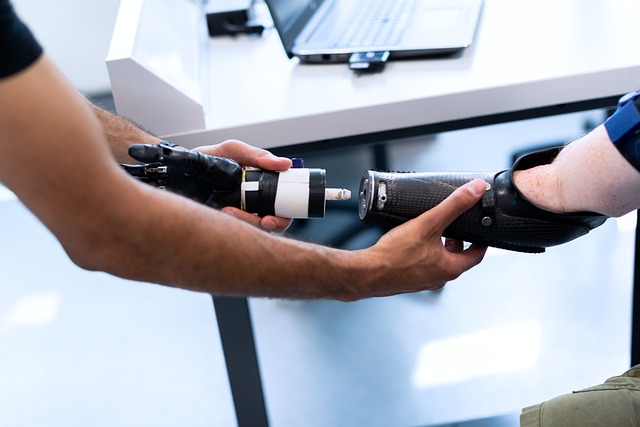
With advancements in AI, real-time adaptation, and brain-machine interfaces, the long-term goal is to create fully autonomous prosthetic limbs that function identically to natural limbs.
These prosthetics will:
- Automatically adjust grip strength, step force, and joint flexibility based on real-time needs.
- Self-learn and improve over time, making movements more natural with continuous use.
- Be controlled seamlessly by brain signals, allowing for effortless, intuitive movement.
By 2030, the prosthetics industry will be on the brink of merging artificial limbs with human biology, ensuring that users never feel like they are wearing an external device.
Final Thoughts: A Future Where Prosthetics Feel Natural
Smart prosthetics are revolutionizing mobility, giving users more control, comfort, and confidence in their daily lives. With AI-driven adaptation, real-time sensor feedback, brain-machine interfaces, and cloud connectivity, the future of prosthetics is more intuitive and personalized than ever before.
At Robobionics, we are committed to bringing these cutting-edge innovations to life, ensuring that users experience seamless, real-time prosthetic adaptation for maximum independence.
If you’re ready to explore next-generation smart prosthetic solutions, book a free demo with Robobionics today and step into the future of adaptive, intelligent prosthetic technology!



